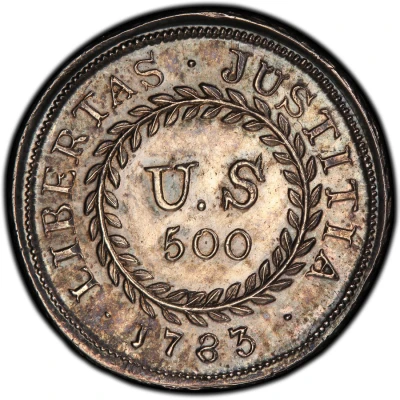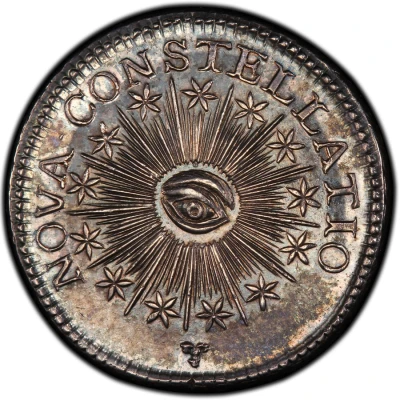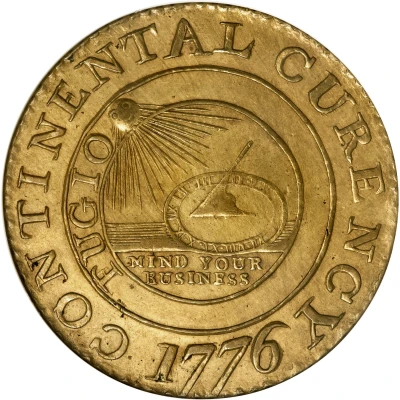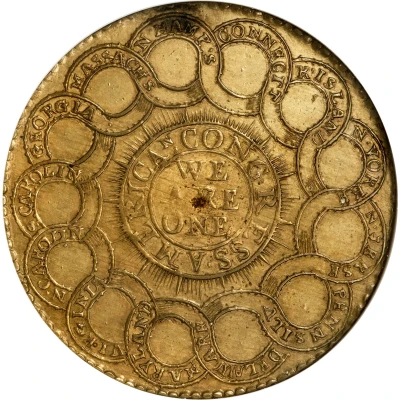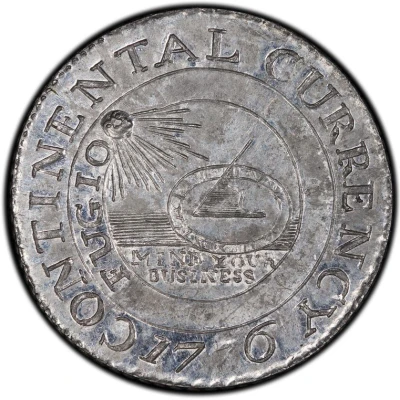
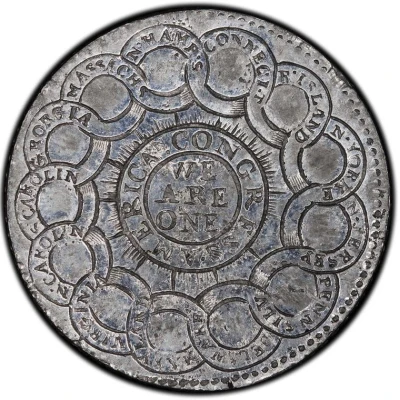

© PCGS
1 Dollar - Continental Currency Pattern
1776 year| Pewter | - | 41 mm |
| Issuer | United States (pre-federal and private/territorial) |
|---|---|
| Period | Post-colonial period (1776-1781) |
| Type | Pattern |
| Year | 1776 |
| Value | 1 Dollar |
| Currency | Dollar |
| Composition | Pewter |
| Diameter | 41 mm |
| Shape | Round |
| Technique | Milled |
| Orientation | Coin alignment ↑↓ |
| Updated | 2024-10-09 |
| Numista | N#23014 |
|---|---|
| Rarity index | 72% |
Reverse
Script: Latin
Lettering:
MASSASCHS N•HAMP•S CONNECT•T R•ISLAND N•YORK N•JERSEY PENNSILV DELAWARE MARYLAND VIRGINIA N•CAROLIN S•CAROLIN GEORGIA
AMERICANᴺ.CONGRESS•
WE
ARE
ONE
Engraver: Benjamin Franklin
Comment
Krause lists four variations:
KM#EA2
obverse lettering: "CURRENCY EG FECIT"
KM#EA3
obverse lettering: "CURRENCY"
the main photo
KM#EA4
obverse lettering: "CURRENCY" (floral cross)
KM#EA5
obverse lettering: "CURENCY" error
© Image courtesy of Stack's Bowers (www.stacksbowers.com)
Additional information can be found here
Interesting fact
The Continental Currency dollar coin from 1776, also known as the "Pattern 1 Dollar," is an extremely rare and valuable coin. It's interesting to note that this coin was made of pewter, a metal that was commonly used for currency during that time period. Pewter is a soft, malleable metal that is often composed of tin, copper, and other metals. The use of pewter in the production of coins was a cost-effective way to create currency, as it was less expensive than other metals like gold or silver. Despite its rarity and value, it's important to note that the Pattern 1 Dollar is not legal tender and should not be used as a form of payment. It's primarily sought after by collectors and historians for its historical significance and unique design.
